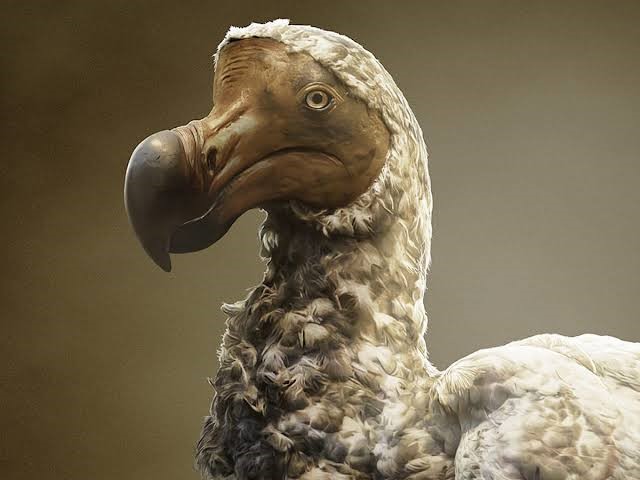Description

Disclaimer: Copyright infringement not intended.
Context
An ambitious new project — a collaboration between genetic engineering company Colossal Biosciences and the Mauritian Wildlife Foundation — promises to not just bring the dodo back to life, but also re-introduce it in its once-native habitat in Mauritius.
Details
Why Revive the Dodo?
- Symbol of Extinction: The dodo's extinction is synonymous with human-caused extinction, making its resurrection a symbolic gesture to highlight the impact of human actions on biodiversity.
- Ecological Restoration: Scientists believe reintroducing the dodo to Mauritius could aid in restoring its fragile ecosystem. Dodos had a role in dispersing seeds of large-fruited plants. Restoring this process might help rejuvenate certain aspects of the island's flora and fauna.
- Conservation Technology: The technology used to revive the dodo could be employed for conserving and restoring other endangered avian species.
- Conservation Optimism: By showcasing the revival of a species, it aims to instill hope and inspire conservation efforts globally, especially in an era marred by climate change and biodiversity loss.
How Scientists Plan to Revive the Dodo?
- Genome Sequencing: Geneticists have sequenced the dodo's entire genome using DNA extracted from a specimen. Comparisons with the genome of the Rodrigues solitaire, the dodo's closest extinct relative, help identify unique dodo traits.
- Practical Implementation: Using the genome information, scientists aim to edit the primordial germ cells (PGCs) of the Nicobar pigeon, the dodo's closest living relative, to express dodo-like physical traits. These edited PGCs would be implanted into sterile chickens, acting as 'interspecies surrogates' for dodo reproduction.
- Challenges: Despite the scientific progress, there are formidable challenges. The process can likely result in a bird resembling the dodo but may take years of selective breeding to attain the dodo's full characteristics.
- Habitat Concerns: The Mauritian landscape has drastically changed since the dodo's extinction. Efforts to reintroduce dodos face challenges due to habitat alteration and invasive species. Consideration for reintroduction focuses on uninhabited and less disturbed islands nearby.
Ethical and Practical Considerations
- Ethical Implications: De-extinction raises ethical concerns about tampering with nature, potentially creating species that have been absent for centuries.
- Environmental Impact: Reintroducing a species must consider potential disruptions to existing ecosystems, and efforts must address invasive species and habitat alteration.
- Symbolic Importance: The significance of reviving the dodo lies not just in its ecological role but also in the message it carries about human responsibility towards the environment.
About dodo
- The dodo, scientifically known as Raphus cucullatus, was a flightless bird that once inhabited the island of Mauritius in the Indian Ocean.
.jpg)
Description and Characteristics:
- Appearance: The dodo was a large, flightless bird with a plump body, short legs, and a distinctively large, hooked beak. It had a greyish-brown plumage, a tuft of curly feathers on its rear, and small, vestigial wings.
- Size: Dodos were about 3 feet (1 meter) tall and could weigh around 20-23 kilograms (44-51 pounds).
- Behavior: It is believed that dodos were primarily herbivorous, feeding on fruits, seeds, and possibly small animals. Due to the lack of natural predators on Mauritius, they had no fear of humans, which ultimately contributed to their downfall.
Habitat and Distribution:
- Habitat: Dodos lived in the dense forests of Mauritius, an island that provided a unique ecological niche with abundant food resources and no natural predators.
- Isolation: They were endemic to Mauritius and did not exist anywhere else in the world.
Extinction:
- Human Impact: The arrival of humans on Mauritius in the late 16th century led to the rapid decline and eventual extinction of the dodo. Sailors, settlers, and their introduced animals, such as pigs, dogs, and monkeys, significantly disrupted the dodo's ecosystem.
- Hunting and Habitat Destruction: Humans hunted dodos for food, and their introduced animals destroyed dodo nests and competed for resources, leading to habitat destruction.
- Extinction Date: The last confirmed sighting of a living dodo was in the late 17th century, and by the end of the 17th century, the species had become extinct.
Scientific Significance:
- Symbol of Extinction: The dodo serves as an iconic symbol of human-induced extinction and a poignant reminder of the impact of human activities on biodiversity.
- Scientific Study: Although the dodo is extinct, scientists continue to study its remains, including skeletal remains and historical records, to understand its biology, behavior, and evolutionary relationships.
Cultural Significance:
- Literary and Artistic Depictions: The dodo has been immortalized in literature, art, and popular culture. Notably, Lewis Carroll's "Alice's Adventures in Wonderland" features a dodo character.
- Symbolism: It symbolizes extinction, human impact on the environment, and the need for conservation efforts to protect endangered species.
About Germ cells
Definition and Characteristics:
- Germ cells are a type of cell that gives rise to gametes (sperm and eggs) through the process of gametogenesis.
- These cells are unique because they are the only cells in the body that contribute genetic information to the next generation.
Key characteristics:
- Haploid: They contain one set of chromosomes (n), whereas somatic cells are diploid (2n).
- Function: Their primary role is to produce gametes (sperm or eggs) for sexual reproduction.
- Location: Initially located in the gonads (testes in males, ovaries in females).
- Embryonic Origin: Derived from primordial germ cells during embryonic development.
Development of Germ Cells:
- Formation: During early embryonic development, primordial germ cells are specified and migrate to the developing gonads.
- Proliferation and Differentiation: Once in the gonads, these cells undergo mitotic divisions and eventually differentiate into oogonia (in females) or spermatogonia (in males).
- Meiosis: Germ cells undergo meiosis to reduce the chromosome number by half, resulting in the formation of haploid gametes (sperm or eggs).
Gametogenesis:
- Spermatogenesis: In males, spermatogonia develop into sperm cells through a series of mitotic divisions followed by meiosis, resulting in the production of mature spermatozoa.
- Oogenesis: In females, oogonia develop into oocytes through a series of mitotic divisions and meiosis. However, meiosis in oogenesis typically pauses during prophase I and completes only after fertilization.
Role in Reproduction:
- Germ cells are vital for sexual reproduction, as they are responsible for producing gametes that carry genetic material.
- When fertilization occurs, a sperm cell (from the male) and an egg cell (from the female) combine to form a zygote, containing a full set of chromosomes necessary for the development of a new individual.
Importance in Genetics and Evolution:
- Germ cells play a crucial role in maintaining genetic diversity and passing on genetic information from parents to offspring.
- They are subject to mutations and genetic variations, contributing to the diversity seen within populations.
- This variability is essential for evolutionary processes.
Clinical Significance:
- Reproductive Health: Any abnormalities or issues in germ cell development can lead to infertility or genetic disorders.
- Research and Therapy: Understanding germ cell biology is crucial for fertility treatments, genetic engineering, and potential advancements in regenerative medicine.
What is Genome Sequencing?
- Definition: Genome sequencing refers to the process of determining the complete DNA sequence of an organism's genome, which comprises all its genetic material, including genes, non-coding sequences, and regulatory elements.
- Techniques: Several sequencing methodologies exist, with the most common being Next-Generation Sequencing (NGS) techniques, such as Illumina sequencing, PacBio sequencing, and Oxford Nanopore sequencing. These methods differ in their approach, cost, accuracy, and throughput.
Stages of Genome Sequencing:
- Sample Collection: The process begins with obtaining a sample containing the organism's DNA, which can be obtained from various sources like blood, tissues, or cells.
- DNA Extraction: DNA is isolated and purified from the sample using specialized laboratory techniques.
- Library Preparation: The DNA is fragmented, and adapters are added to facilitate sequencing. This step prepares the DNA for sequencing.
- Sequencing: The prepared DNA is sequenced using the chosen technology, generating millions to billions of short DNA fragments called "reads."
- Assembly: Bioinformatics tools are employed to align and overlap these reads to reconstruct the entire genome sequence, known as "genome assembly."
Applications of Genome Sequencing:
- Human Genetics and Medicine: Genome sequencing aids in understanding genetic diseases, identifying mutations, and personalized medicine. It enables the study of complex traits, inheritance patterns, and predispositions to diseases.
- Evolutionary Biology: Comparative genomics involves comparing the genomes of different species, revealing evolutionary relationships, and understanding genetic adaptations.
- Agriculture and Biotechnology: In agriculture, genome sequencing helps in breeding programs, crop improvement, and developing disease-resistant varieties. In biotechnology, it aids in genetic engineering and the creation of genetically modified organisms.
- Microbial Genomics: Sequencing microbial genomes is essential in studying infectious diseases, antibiotic resistance, and environmental microbiology.

Challenges and Limitations:
- Cost and Resources: High-throughput sequencing can be expensive, and analyzing vast amounts of data requires computational resources.
- Accuracy: Although sequencing technologies have advanced significantly, errors in sequencing and assembly can occur, particularly in repetitive or complex regions of the genome.
- Ethical and Privacy Concerns: Genome sequencing raises ethical issues regarding privacy, consent, and the potential misuse of genetic information.
Future Directions:
- Advancements in Technology: Ongoing developments aim to enhance sequencing accuracy, decrease costs, and improve sequencing technologies to make them more accessible and efficient.
- Single-Cell Sequencing: Studying individual cells' genomes provides insights into cellular heterogeneity, developmental biology, and disease mechanisms.
- Clinical Integration: Wider integration of genome sequencing into clinical practice for disease diagnosis, treatment decisions, and preventive healthcare.
Conclusion
In summary, the initiative to de-extinct the dodo is not solely about resurrecting a lost species. It symbolizes the interconnectedness of humanity and nature, raising awareness about our role in conservation and inspiring efforts to mitigate human-induced extinction and preserve biodiversity.
|
PRACTICE QUESTION
Q. The extinction of the dodo is often cited as a poignant example of human-induced extinction. Discuss the factors that led to the demise of the dodo and evaluate the lessons it offers in the context of modern conservation efforts (250 Words)
|
Array
(
[0] => daily-current-affairs/topic-of-the-week-de-extincting-the-dodo
[1] => daily-current-affairs
[2] => topic-of-the-week-de-extincting-the-dodo
)











